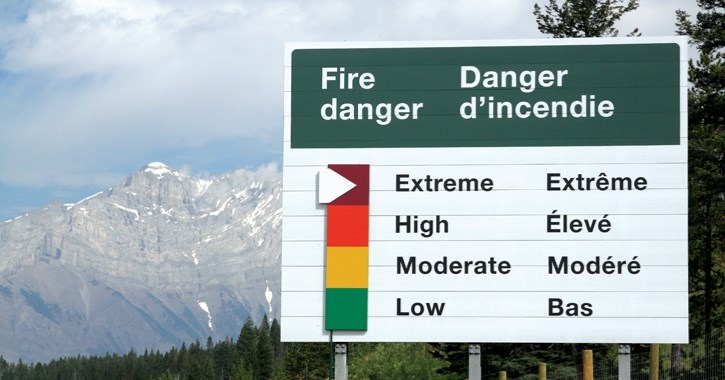Recent hot temperatures led rescuers to evacuate a female hiker with a severe case of heat stroke from a trail in Lake Louise, while an overheated dog died on a trail in Kananaskis Country.
With temperatures expected to hit the high 20s C and low 30s C again at the end of the week and into the weekend, people are being warned to take the necessary precautions to protect both themselves and their pets.
A couple with a four-year-old German shepherd was scrambling Grizzly Peak in K-Country on Sunday (July 9) – a day the temperature hit 29 degrees Celsius. The dog showed signs of exhaustion and ended up dying on the trail on the descent.
Alberta conservation officers say the man tried to carry his suffering dog down the steep trail, but ended up leaving his wife with their pet not too far from the trailhead so he could run for help.
“I think it’s important for people to know how quickly it can happen,” said Arian Spiteri, district conservation officers for K-Country, noting three conservation officers were on scene shortly after they got the call.
Two days earlier, on Friday (July 7), Banff National Park rescuers were called to help a 40-year-old woman suffering a severe case of heat stroke while hiking the Plain of Six Glaciers at Lake Louise.
That day hit a record temperature of 31.4 C.
“She was suffering from severe heat stroke,” said Aaron Beardmore, a visitor safety specialist for Banff, Yoho and Kootenay national parks, adding she was flown by helicopter to a waiting ambulance in Lake Louise and taken to the hospital in Banff.
Heat illnesses, which include heat stroke, can affect people quickly and are mainly caused by over-exposure to heat, or over-exertion in the heat. In the most severe cases, overexposure to summer’s scorching temperatures can be fatal to people.
Some symptoms to watch for, according to Health Canada, include dizziness or fainting, nausea or vomiting, throbbing headaches, rapid breathing and heartbeat, extreme thirst and muscle weakness and cramps among others.
Beardmore said there are ways for outdoor enthusiasts to help mitigate heat incidents, saying people can head out earlier in the day under cooler temperatures and return before the heat of the day mid-afternoon.
In addition, he said people could consider seeking out hikes on those hot days that have more shade, noting the Plain of Six Glaciers trail is open and exposed to the sun. People often underestimate how much water they need on hot days, he added.
“We want to encourage people to make informed choices, and take adequate supplies and equipment with them for the chosen activity,” said Beardmore.
As for dogs, they can get dehydrated or get heatstroke quickly on hot days and need to have access to plenty of water.
Vet John Williamson, owner of Bow River Veterinary Centre, said much depends on the breed, age, health and condition of a dog, noting for some breeds it’s a good idea to avoid a strenuous hike on hot days.
“There are certain breeds and ages and conditions I’d be very concerned about, but I wouldn’t say every dog could not do that hike. There are lots that could do it and do it safely,” he said.
“A lot of it is also knowing your dog and a lot of it is also common sense.”
Williamson said dogs aren’t necessarily naturally in shape, either.
“If you’re going to hike you have to get them gradually used to it. It’s like humans, we’re not just going to get off the couch and go do a 20-kilometre hike,” he said. “You don’t want to force a dog into a situation that’s going to be hard.”
If people choose to hike with dogs on hot days, Williamson said it’s important they have plenty of water.
“They don’t get rid of heat the same way. If you don’t know access to water on trail, you’re going to have to carry it for your dog,” he said.




